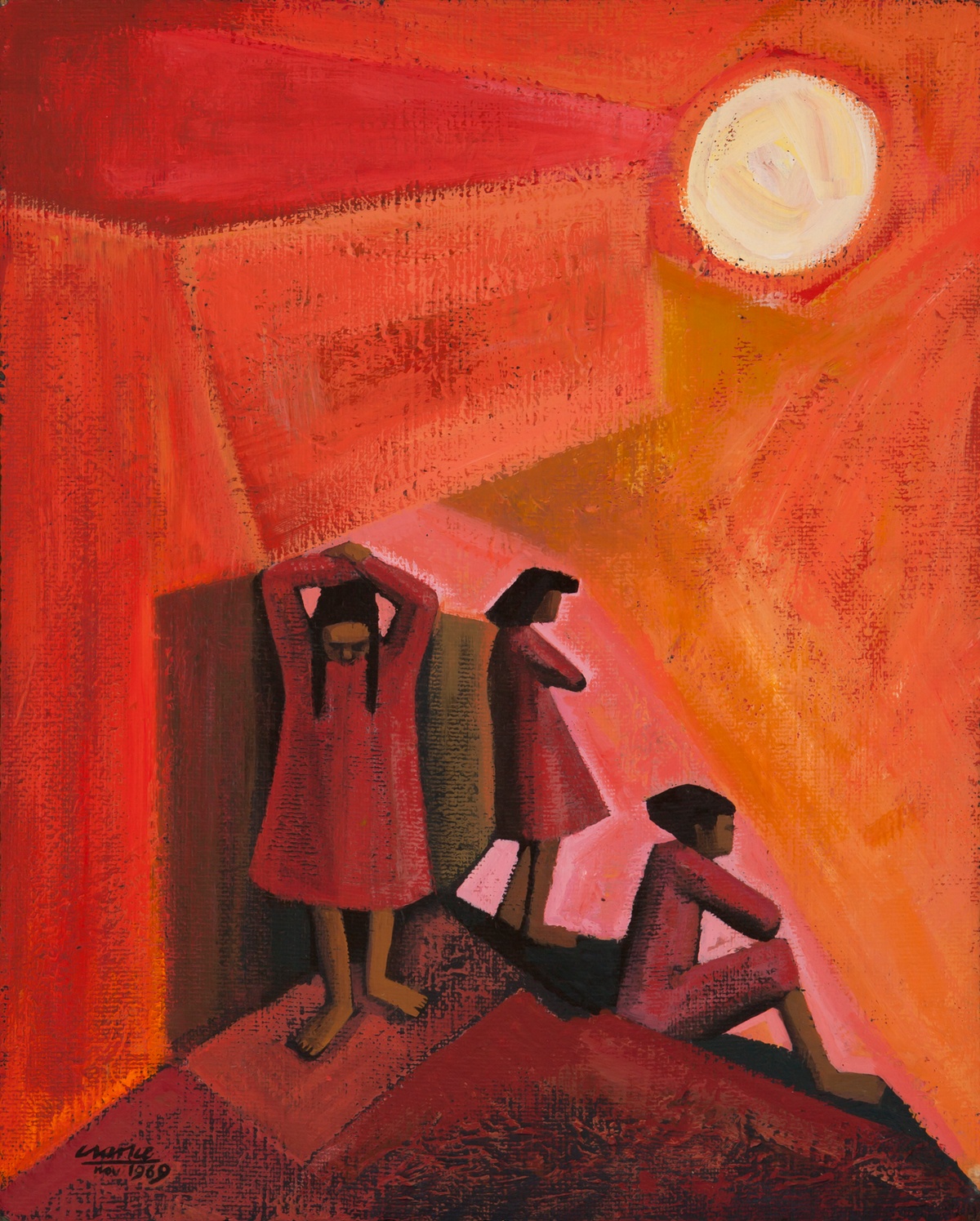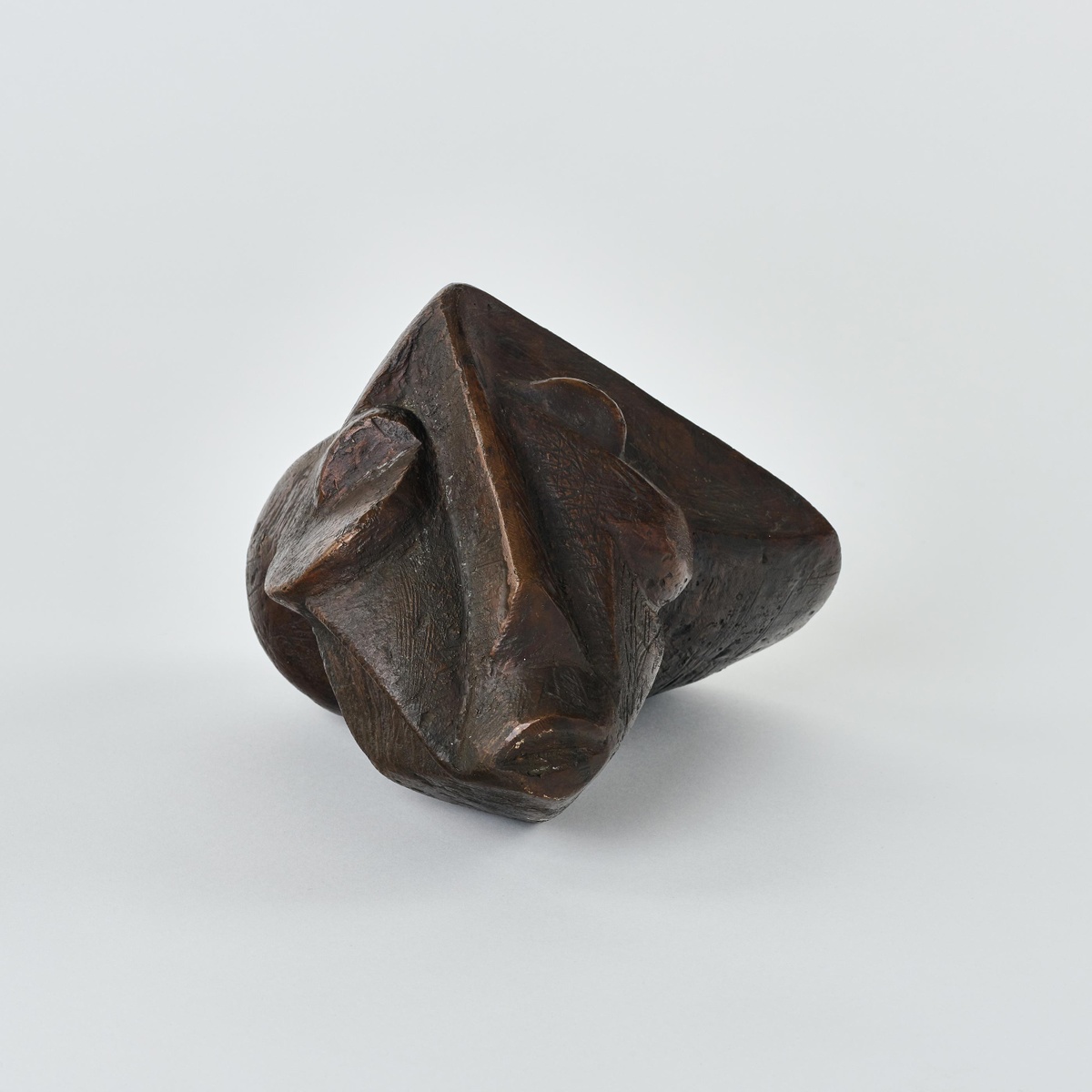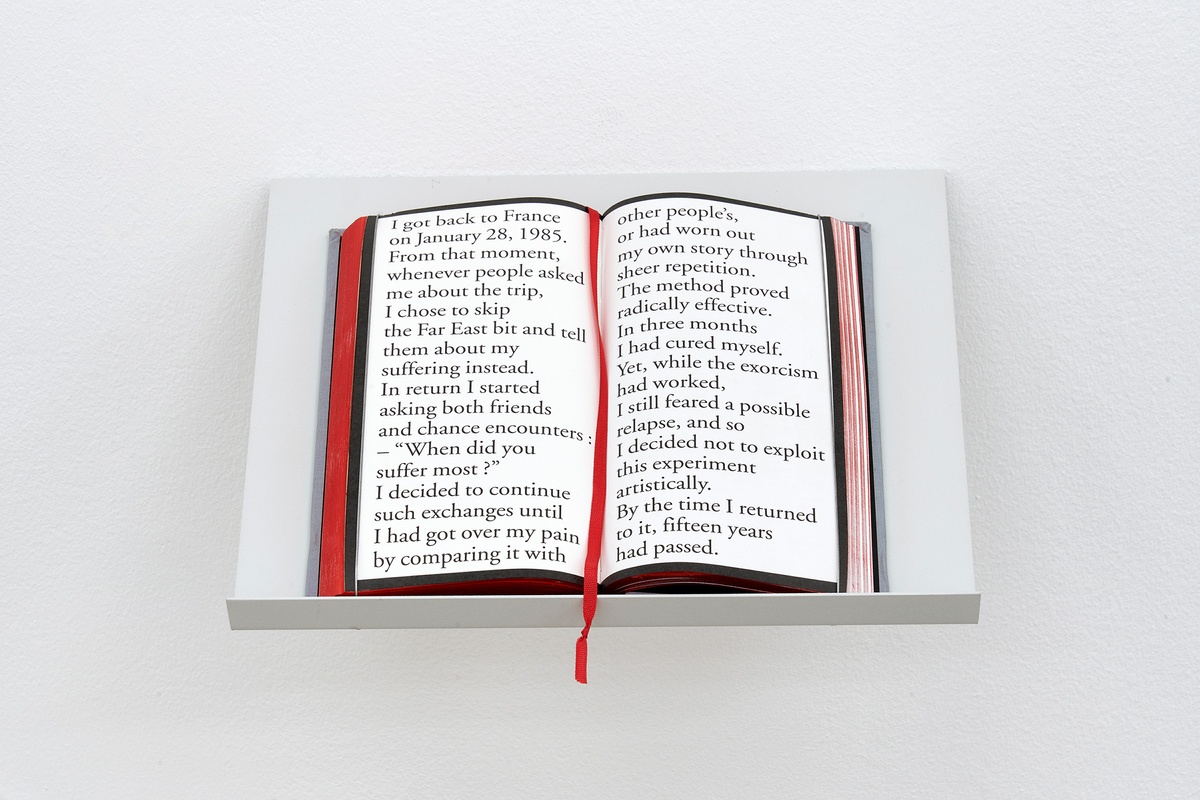David Goldblatt

What is perhaps most striking about Goldblatt’s “Lashing” shovels retrieved from underground is its caption – the evocative imagery of its language, the attention it draws to absence. The black man in the text is missing from the corresponding photograph. Only his shovel remains, one among hundreds of others – now metonyms for all the bodies that toil, and have toiled, in the mines. The caption gives the image not only context but the weight of metaphor. It is an unusually lyrical addition – Goldblatt’s captions being, for the most part, coolly factual and unaffected.
This photograph is included in On the Mines (first edition), 1973; On the Mines (second edition), 2012; and Structures of Dominion and Democracy, 2018.
“I was drawn,” the late photographer David Goldblatt wrote, “not to the events of the time but to the quiet and commonplace where nothing ‘happened’ and yet all was contained and immanent.” A preeminent chronicler of South African life under apartheid and after, Goldblatt bore witness to how this life is written on the land, in its structures or their absence. Unconcerned with documenting significant historic moments, his photographs stand outside the events of the time and yet are eloquent of them. Through Goldblatt’s lens, the prosaic reveals a telling poignancy. Even in those images that appear benign, much is latent in them – histories and politics, desires and dread. His photographs are quietly critical reflections on the values and conditions that have shaped the country; those structures both ideological and tangible. Among his most notable photobooks are On the Mines (1973), Some Afrikaners Photographed (1975), In Boksburg (1982), The Structure of Things Then (1998), and Particulars (2003).







